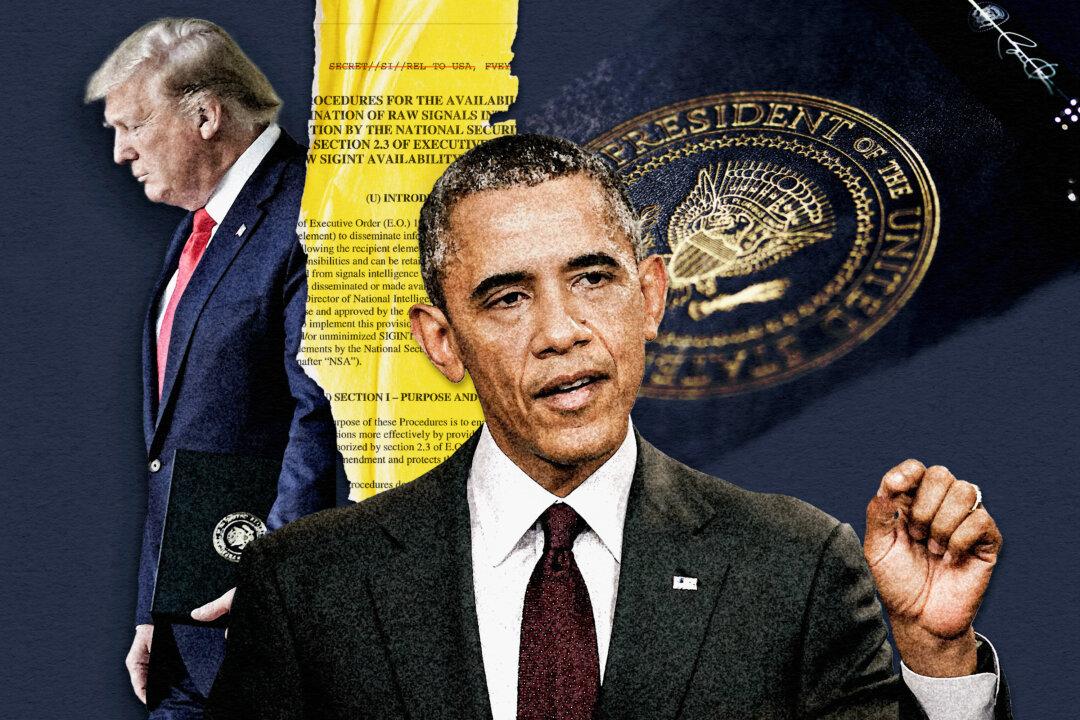Commentary
The remarkable similarities between a recently leaked 2018
proposal from EcoHealth Alliance head Peter Daszak and the defining characteristics of COVID-19 raise new questions regarding the origins of the pandemic.
The
proposal, dated March 27, 2018, details the organization’s plan to create entirely new coronaviruses through the synthetic combination of preexisting virus backbones. It describes how those viruses were going to be made more virulent in humans by the insertion of a furin cleavage site, a feature that distinguishes COVID-19 from all other SARS-related coronaviruses.
The plan also envisaged the creation of an aerosolized vaccine that could be used to immunize wild bat populations.
Daszak’s proposal, which was leaked by a whistleblower to DRASTIC, an online community of researchers investigating the origins of the pandemic, has since been
authenticated by Linfa Wang, one of the scientists who was involved in Daszak’s proposal.
While it isn’t known whether Daszak’s proposal was realized, there are a number of indications that it was, including a distinct overlap between his proposal and work being carried out by the Wuhan Institute of Virology (WIV).
The new revelations contained in Daszak’s proposal will likely have far-reaching implications as to the ongoing search for the virus’s origins.
Furin Cleavage Site
There have been a number of puzzling features surrounding COVID-19 that set it apart from any other known coronavirus.COVID-19, which was immediately
well-adapted to transmission in humans, is surprisingly poorly adapted for infection in bats, indicating significant evolutionary hurdles in acquiring its human transmission feature through natural evolution in bat populations.
This adaptation for human transmission was highlighted in a
recent study in the science journal Nature, which noted that the COVID-19 virus was uniquely adapted to infect humans, as it “exhibited the highest binding to human (h)ACE2 of all the species tested.”
COVID-19 is also the
only known SARS-related coronavirus that contains a furin cleavage site, a defining feature that sets it apart from any related viruses. The furin cleavage site is the key to the virus’s pathogenicity in humans.
This feature of COVID-19 was often
puzzled over by scientists early in the pandemic. While it has been argued that a furin cleavage site may have sprung up naturally, there’s no evidence of this ever happening. However, furin cleavage sites have been
inserted in a laboratory setting.
A furin cleavage site can be inserted using
seamless technology, a process that would leave no evidence of a lab insertion. Shi Zhengli, the director of the WIV and one of Daszak’s proposal partners, supervised a thesis in April 2017 that detailed how her lab was already performing experiments that replaced “the S gene without traces” on bat coronaviruses.
Both Daszak and Shi have gone to some lengths to avoid discussion of the furin cleavage site.
Daszak has publicly
downplayed the presence of the furin cleavage site, while simultaneously failing to admit that he proposed to insert such sites into coronaviruses in conjunction with the WIV.
Shi
described the features of COVID-19 in great detail in her highly influential Feb. 3, 2020, article in Nature magazine. However, she conspicuously left out any mention of the virus’s furin cleavage site.
Shi’s omission is striking, as the presence of the furin cleavage site was immediately visible from looking at COVID-19’s genomic sequence, which was
released in January 2020. The significance of the site was
acknowledged by Vincent Racaniello, a virologist and natural origins proponent who frequently features Daszak in his weekly podcasts. Only days after Shi had concealed the existence of the furin cleavage site, Racaniello
said insertion of a furin cleavage site into another virus, the H5N1 influenza virus, showed that it created “higher pathogenicity.”
He also wondered if the “insertion of a furin cleavage site allowed a [bat coronavirus] to gain the ability to infect humans.”
Backbone
Despite the presence of a unique furin cleavage site, COVID-19 generally resembles other bat coronaviruses. But, the virus’s genomic backbone conspicuously doesn’t actually match any previously recorded backbone.This lack of a traceable backbone has been a primary
argument used by natural origin proponents in their claims that the virus couldn’t have been engineered. Kristian Andersen, a scientist who has become known for promoting the natural origin narrative, specifically cited this in his proximal origin paper.
“The genetic data irrefutably show that SARS-CoV-2 is not derived from any previously used virus backbone,” Andersen wrote.
But there are several problems with this argument.
The lack of a previously used backbone as the basis for genetic engineering doesn’t preclude the use of an unknown one. The natural origins argument presupposes that all scientists diligently posted their genomic backbone sequences to public databases. We know that the Wuhan Institute, which reportedly
collected thousands of different viral strains during its work in southern China, abruptly took its database of viral sequences
offline in September 2019.
Daszak’s proposal introduces another possibility, one that fits remarkably well with what’s known about COVID-19’s backbone. Daszak outlined a plan to create entirely new “consensus” viruses through the synthetic combination of existing viruses, resulting in an entirely new virus that wouldn’t be directly traceable on any family tree.
These “consensus” viruses, which didn’t exist in nature, would have no singular ancestor, because they would be a genetic average of the viruses used in their creation. The novel viruses would appear as composites of their underlying inputs.
A
recent study examined more than 13,000 bats and found that many of them carried viruses related to the first SARS virus. But the study didn’t find a single instance of a virus related to COVID-19.
Daszak’s plan was to construct 3 to 5 such synthetic coronaviruses per year.
The use of a synthetic backbone in COVID-19 appears to have been a topic of discussion during a Feb. 1, 2020, teleconference organized by Dr. Anthony Fauci, where participants, including Fauci, were
told by presenting scientists that it appeared highly likely that the virus had originated within a lab.
Within minutes of the teleconference’s start, one of the participants had
emailed a question to the group: “We need to talk about the backbone too, not just the insert?”
While it was known that Fauci’s teleconference group was
focused on the insertion of a cleavage site, the reference to the virus’s backbone had been seen as something of an enigma.
Daszak’s 2018 proposal now provides a possible explanation as to why Fauci’s teleconference group also had an interest in the virus’s backbone.
If COVID-19 was created in a manner described in Daszak’s proposal, it would explain why we haven’t found a good match for the virus in nature. A synthetic virus, by definition, would be different from all other viruses and wouldn’t have any direct progenitor. The notion that COVID-19 is based on a synthetic backbone also is supported by the fact that it
resembles existing viruses across various parts of its sequence.
Nanoparticle Vaccine
Daszak’s proposal also detailed a plan to release airborne coronavirus vaccines into wild bat populations in China. The ostensible purpose was to inoculate the bats by releasing skin-penetrating aerosolized nanoparticles containing “novel chimeric spike proteins” into bat caves before the virus could jump to humans.
Although the notion of mass immunizing wild bat populations seems somewhat outlandish, Dasak’s proposal regarding the use of an aerosolized vaccine had remarkable overlap with work being conducted at the same time by the WIV.
According to emails recently released under a Freedom of Information Act request, Ping Chen, NIAID’s representative in China, sent
an email in February 2018 that highlighted a new type of flu vaccine that had been developed by the WIV that utilized nanotechnology in its delivery process.
Chen included a media report that mentioned the new nanotechnology vaccine created by the WIV, and she alerted the Environment, Science, Technology, and Health (ESTH) Section at the U.S. embassy in Beijing, as well as the U.S. consulate in Wuhan. However, when Chen and ESTH tried to pursue the information, the Chinese news report had been scrubbed, and any links to the new vaccine were blocked on the Chinese internet.
The overlap between Daszak’s vaccine proposal and the new nanotechnology vaccine developed by the WIV is a possible indicator that work on Daszak’s plan was already in motion. Daszak has worked closely with Shi and the WIV for at least
15 years. Some scientists have also
pointed out that the level of detail in Daszak’s proposal indicates that the work was already being done, but until now there was no tangible evidence of this.
While it isn’t known whether the nanoparticle vaccine discussed in Daszak’s proposal is the same nanotechnology vaccine created by the WIV, Daszak’s proposal was made just four weeks after the facility
completed the development of its new “nano-vaccine.” The lengths to which Chinese authorities went to scrub any information related to the new vaccine from the internet are equally noteworthy.
Lab-Made or Remarkable Coincidence?
Remarkably, Daszak’s 2018 proposal provides three separate potential links to the origins of the pandemic. It details how he and his collaborators from the Wuhan Institute of Virology planned to genetically engineer a “human-specific” furin cleavage site into coronaviruses. A furin cleavage site is the defining feature of the coronavirus that emerged in Wuhan in 2019.
The proposal also details the creation of entirely new consensus viruses that would effectively have no clear ancestor in nature. Again, the lack of ancestral lineage is a notable feature of COVID-19.
Lastly, Daszak proposed to create a novel nanoparticle coronavirus vaccine. At the same time, the WIV had developed a remarkably similar vaccine utilizing what appears to be the same technology.
Ultimately, there appear to be only two possibilities for the virus’s origins: Either a virus was created at the Wuhan lab in line with Daszak’s 2018 proposal and ultimately escaped, or a virus with the same characteristics contained in Daszak’s proposal evolved naturally—and emerged in Wuhan, more than 1,000 miles from the nearest bat reservoir.
Views expressed in this article are opinions of the author and do not necessarily reflect the views of The Epoch Times.








